War
Grover Loening’s Flying Airstrip
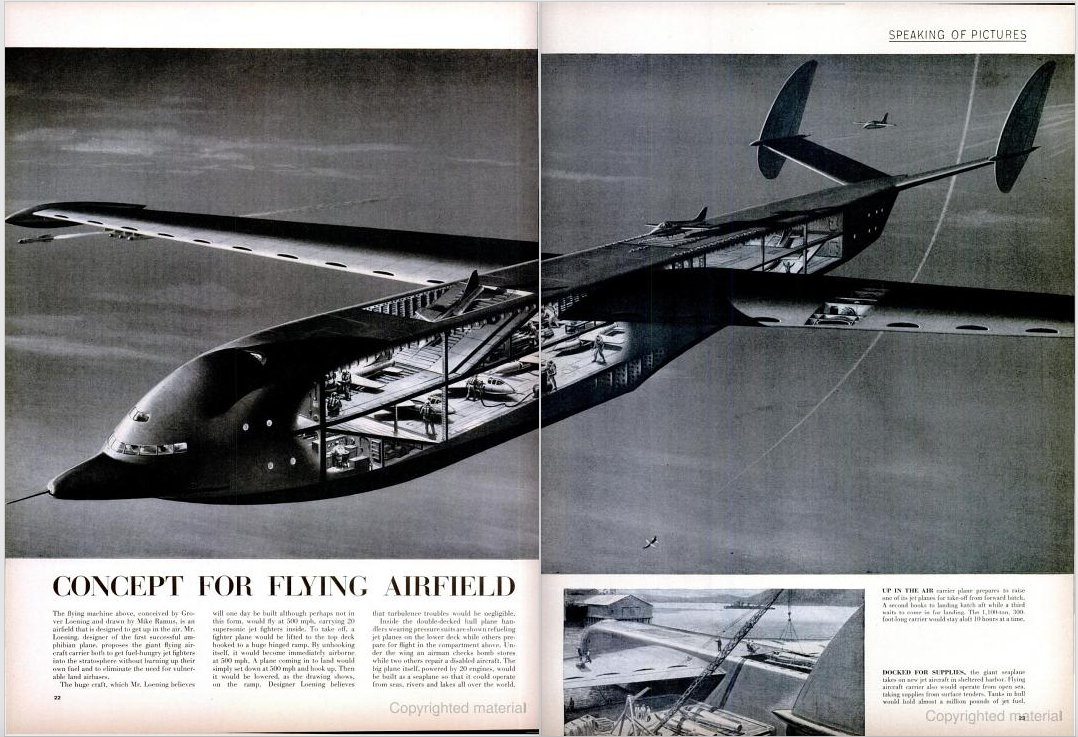
Source.
The inventor's Wikipedia page.
Posted By: Paul - Mon Dec 14, 2020 -
Comments (1)
Category: Excess, Overkill, Hyperbole and Too Much Is Not Enough, War, Weapons, Air Travel and Airlines, 1950s
Demoralize Nazis with tea
1940: Stephens Fothergill of London had a very British plan to defeat the Nazis:
St. Louis Post-Dispatch - Feb 15, 1940
Posted By: Alex - Wed Oct 28, 2020 -
Comments (2)
Category: Military, War, 1940s
The Germ-Hun
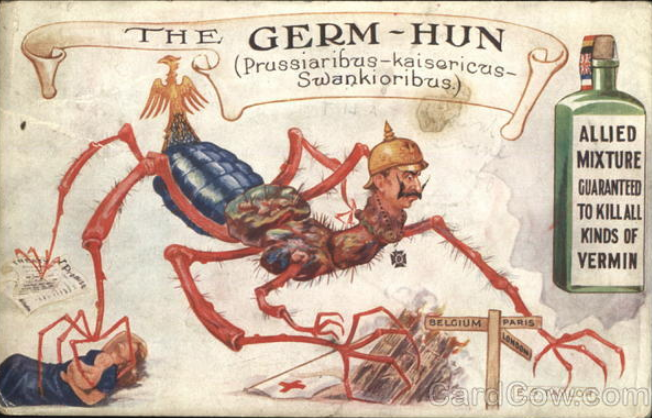
With thanks to Lawrence Person.
Posted By: Paul - Sun Oct 11, 2020 -
Comments (0)
Category: Excess, Overkill, Hyperbole and Too Much Is Not Enough, Hygiene, Propaganda, Thought Control and Brainwashing, War, Reader Recommendation, Europe, Twentieth Century
The Duchess of Windsor’s Trench Mittens
Wallis Simpson, the Duchess of Windsor, is best known as the woman for whom King Edward VIII abdicated the throne in 1936, so he could marry her. But she was also an inventor, though not a very prolific one. In 1940, she invented "trench mittens" that could be unzipped to allow a soldier to use his trigger finger.
The Whitewright Sun - Feb 8, 1940
The backstory is that the Duke and Duchess were widely suspected to be Nazi sympathizers. Nevertheless, at the start of the war they were trying to make a public display of how patriotic they were. The Duke pushed to get a position in the army. And the Duchess used her fashion skills to invent "trench mittens".
But by the end of 1940, the British military had decided they were too much of a liability to keep around, so they were shipped off to the Bahamas for the duration of the war.

Winnipeg Tribune - Apr 6, 1940

The Duke and Duchess of Windsor in 1937
Posted By: Alex - Fri Sep 25, 2020 -
Comments (1)
Category: Fashion, Royalty, War, 1940s
Caccolube
Or, how to ruin an engine, courtesy of the OSS."When circulated through this system, the compound fuses and welds the moving metal parts of the machinery. Slipped into a truck, the Caccolube takes effect after the truck has been driven from 30 to 50 miles. It reacts so thoroughly on pistons, cylinder walls and bearing journals that the vehicle is not only thrown out of service but the engine is destroyed beyond repair."
This lethal "lube job" replaced the original effort using sugar, when it was discovered that sugar actually promoted better engine performance in the vehicles of that era.
Source: Jack Anderson, "Rare arsenal used by spies," Santa Cruz Sentinel, Mar 9, 1987.
Posted By: Alex - Sat Sep 12, 2020 -
Comments (1)
Category: Motor Vehicles, War, Weapons, Spies and Intelligence Services
UK’s Central Government War HQ
The Central Government War Headquarters (CGWHQ) is a 35-acre (14 ha)[1] complex built 120 feet (37 m) underground[2] as the United Kingdom's emergency government war headquarters – the hub of the country's alternative seat of power outside London during a nuclear war or conflict with the Soviet Union. It is located in Corsham, Wiltshire, in a former Bath stone quarry known as Spring Quarry, under the present-day MoD Corsham.[3]
The Wikipedia page.
Posted By: Paul - Tue Aug 25, 2020 -
Comments (3)
Category: War, 1960s, United Kingdom
The Holie Terra
Seeking a way to use technology to win the tunnel warfare in Vietnam, Nelson Frost of Byram, Connecticut invented the "Holie Terra." Although in the write-up for the patent he received (No. 3,395,641), he referred to it more formally as a "remotely controlled tunnel exploration and destroying means."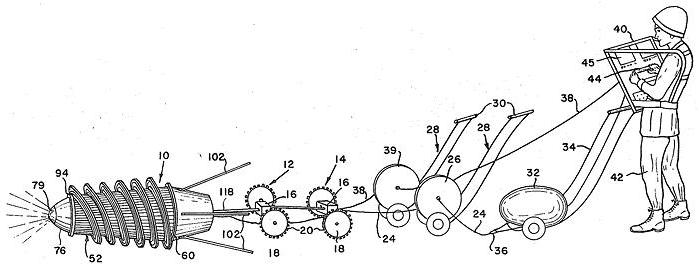
From his patent:
More particularly, it is an object of the invention to provide a tunnel exploring device which may be maneuvered from a remote position deep into the tunnel network and there be detonated so that there is a much higher kill probability of the enemy forces with greater safety to the attackers than has been possible by any means employed heretofore.

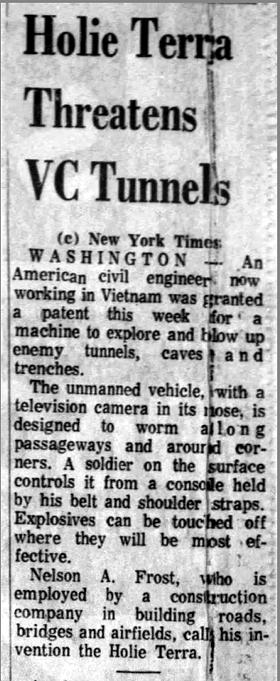
Montgomery Advertiser - Aug 15, 1968
Posted By: Alex - Sun Aug 23, 2020 -
Comments (2)
Category: War, Weapons, Patents, 1960s
Sounds of War
On the heels of yesterday's post, and thanks to loyal and creative WU-vie KDP, comes this literal blast from his past. We hope it brings back childhood memories.
Posted By: Paul - Wed Aug 12, 2020 -
Comments (1)
Category: War, Reader Recommendation, Special Effects, 1960s
The War in Cuba Board Game
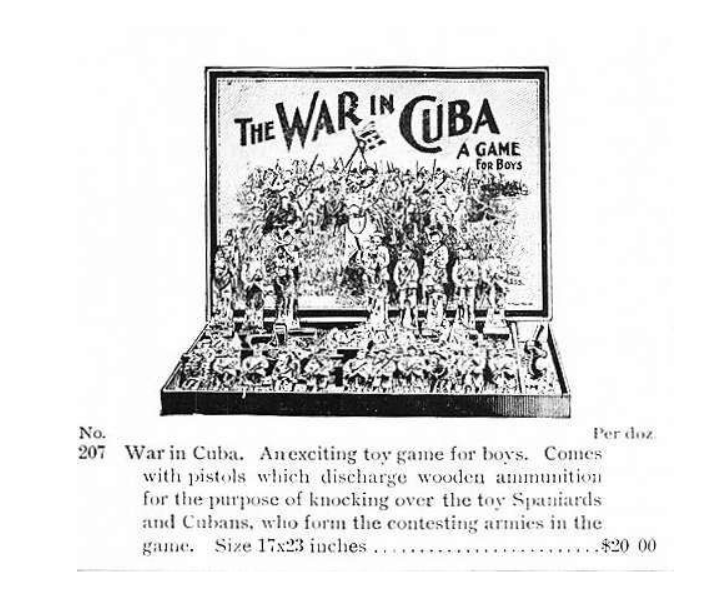
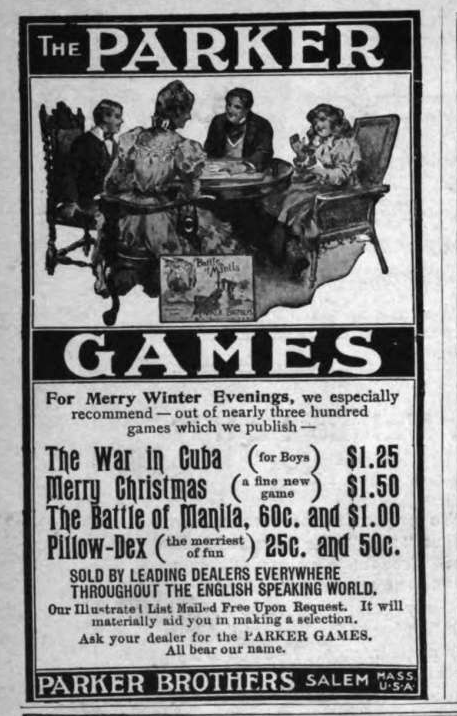
Official entry.
Posted By: Paul - Mon Jun 22, 2020 -
Comments (4)
Category: Games, War, Nineteenth Century
Your Biological Safety Mask
Posted By: Paul - Sun May 17, 2020 -
Comments (2)
Category: Health, War, Children

| Who We Are |
|---|
| Alex Boese Alex is the creator and curator of the Museum of Hoaxes. He's also the author of various weird, non-fiction, science-themed books such as Elephants on Acid and Psychedelic Apes. Paul Di Filippo Paul has been paid to put weird ideas into fictional form for over thirty years, in his career as a noted science fiction writer. He has recently begun blogging on many curious topics with three fellow writers at The Inferior 4+1. Contact Us |




